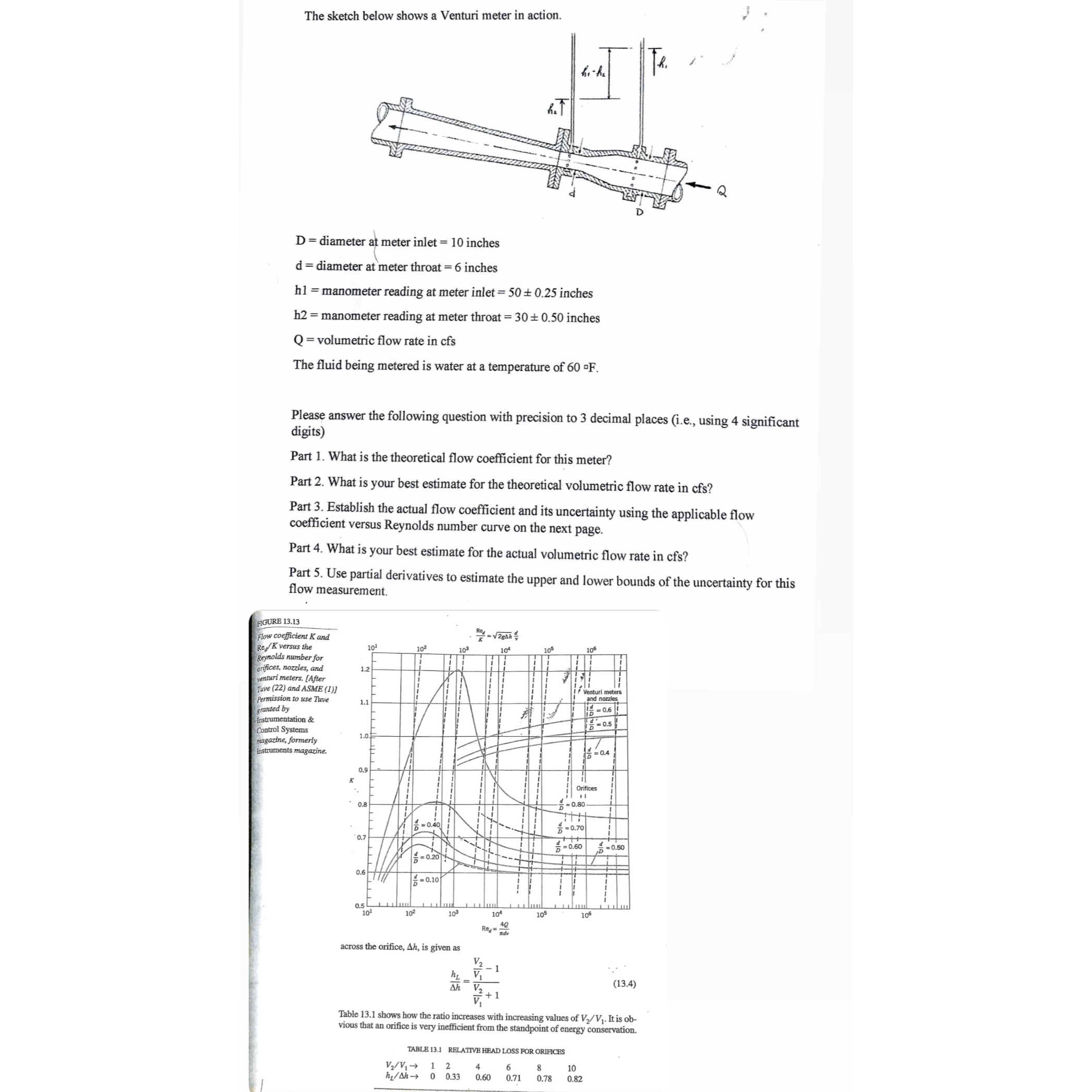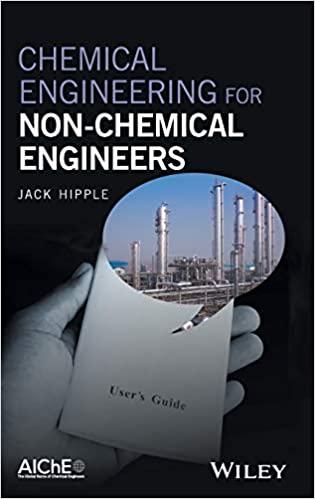Answered step by step
Verified Expert Solution
Question
1 Approved Answer
The sketch below shows a Venturi meter in action. D = diameter at meter inlet = 1 0 inches d = diameter at meter throat
The sketch below shows a Venturi meter in action.
diameter at meter inlet inches
diameter at meter throat inches
manometer reading at meter inlet inches
manometer reading at meter throat inches
volumetric flow rate in cfs
The fluid being metered is water at a temperature of
Please answer the following question with precision to decimal places ie using significant digits
Part What is the theoretical flow coefficient for this meter?
Part What is your best estimate for the theoretical volumetric flow rate in cfs
Part Establish the actual flow coefficient and its uncertainty using the applicable flow coefficient versus Reynolds number curve on the next page.
Part What is your best estimate for the actual volumetric flow rate in cfs
Part Use partial derivatives to estimate the upper and lower bounds of the uncertainty for this flow measurement.
FIGURE
Flow coefficient ane
versus the
Reynolds number for
orifices, nozzles, and
venturi meters. After
Tive and ASME
Permission to use Tuvi
granted by
Instrumentation &
Control Systems
magazine, formerly
Instruments magazine.
across the orntice, is given as
Table shows how the ratio increases with increasing values of It is obvious that an orifice is very inefficient from the standpoint of energy conservation.
TABLE RELATIVE HEAD LOSS POR ORIFICES

Step by Step Solution
There are 3 Steps involved in it
Step: 1

Get Instant Access to Expert-Tailored Solutions
See step-by-step solutions with expert insights and AI powered tools for academic success
Step: 2

Step: 3

Ace Your Homework with AI
Get the answers you need in no time with our AI-driven, step-by-step assistance
Get Started


